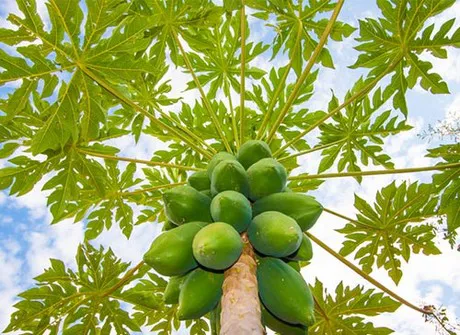Following the potential outbreak of Salmonella associated with contaminated papayas from Mexico, demand for Guatemalan papayas has picked up.
“Demand is high and we’re meeting that demand,” says Mirna Skinner of WYCO Produce Inc. in Tampa, Fl. “Retailers and wholesalers are requesting more papaya and we’re supplying them with fruit to different locations in the continental US and Canada.” She adds that the containers are loaded with Guatemalan product on a daily basis to secure freshness.
In the spring, an import alert was issued by the Food and Drug Administration (FDA) allowing U.S. ports of entry to detain Mexican papayas without physical examination following concerns of widespread Salmonella contamination. The outbreak spread to multiple states in the U.S. (This alert was withdrawn last week.)
Yet, WYCO Produce Inc., which supplies its private label Kaya Paya papaya from Guatemala, already saw an increase in demand late last year. “We’ve felt the pick up in demand since December 2018 and the rest of the year looks very promising for Kaya Paya brand and Wyco,” says Skinner, who adds that Kaya Paya is grown only in Guatemala and is a tainung variety of papaya as opposed to Mexico’s more popular variety, the maradol papaya. “We saw an increase in orders from our retailers and wholesalers in the first quarter this year. And in the past two weeks, orders from our retailers have quadrupled.”

Increased acreage
The ability to meet increased demand follows a strategic growing and marketing plan to expand Kaya Paya yields and boost its market presence in both retail and wholesale. And growing exposure can further help consumers understand the difference between the Mexican and Guatemalan product.
“The tainung variety differs from the maradol variety. Tainung is longer in shape while the maradol is rounder and smaller,” says Skinner. “The Guatemalan product is also more coral colored when you cut it open and has a green-orange coloring on the outside as it ripens. It can be eaten with high or low skin color. It also has a mellower taste that’s sweet and very flavorful.”
Skinner says the market has reacted and positively to the increase in demand. “We’re hoping that the consumers out west have this different product to try and they’ll be pleased with it,” she says.
For more information:
Mirna Skinner
WYCO Produce Inc.
Tel: +1 (813) 751-3480
mirna@wycoproduce.com
www.wycoproduce.com
